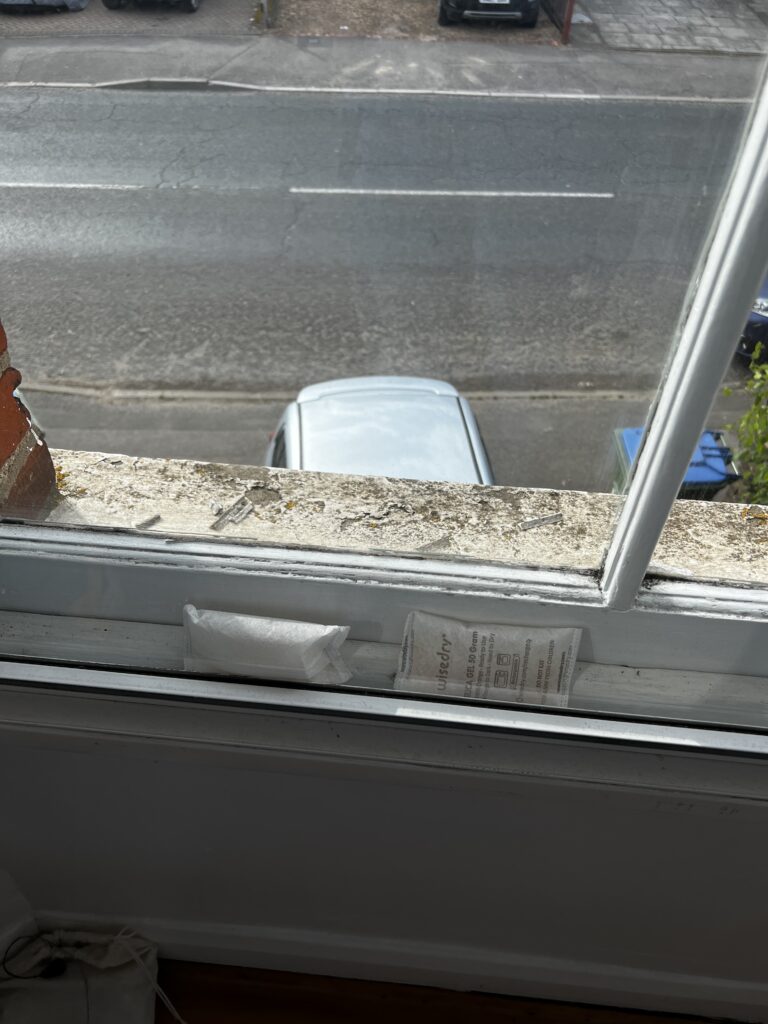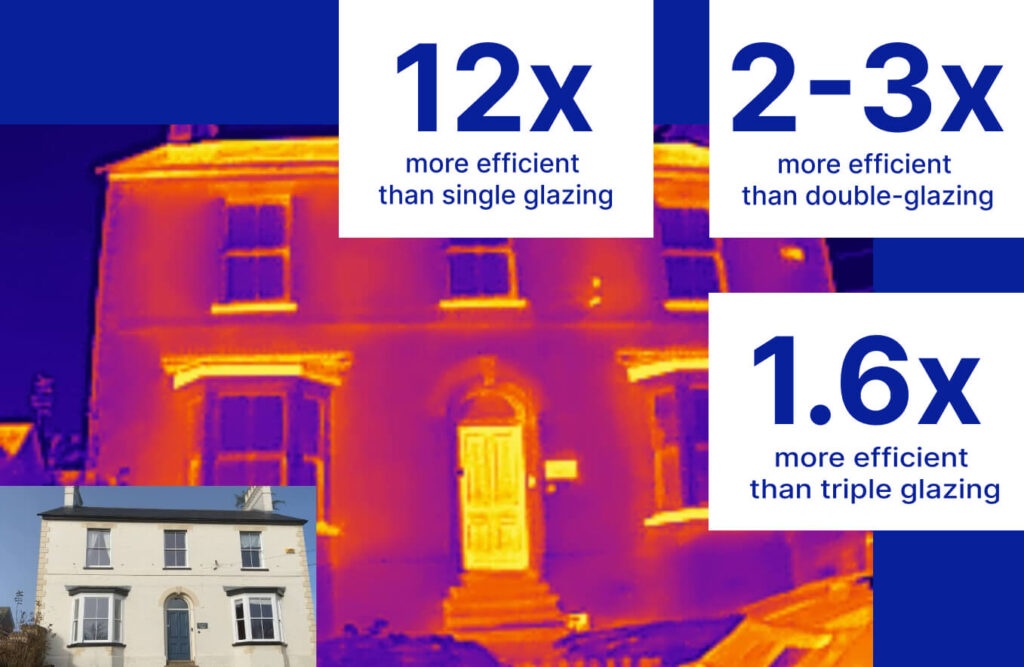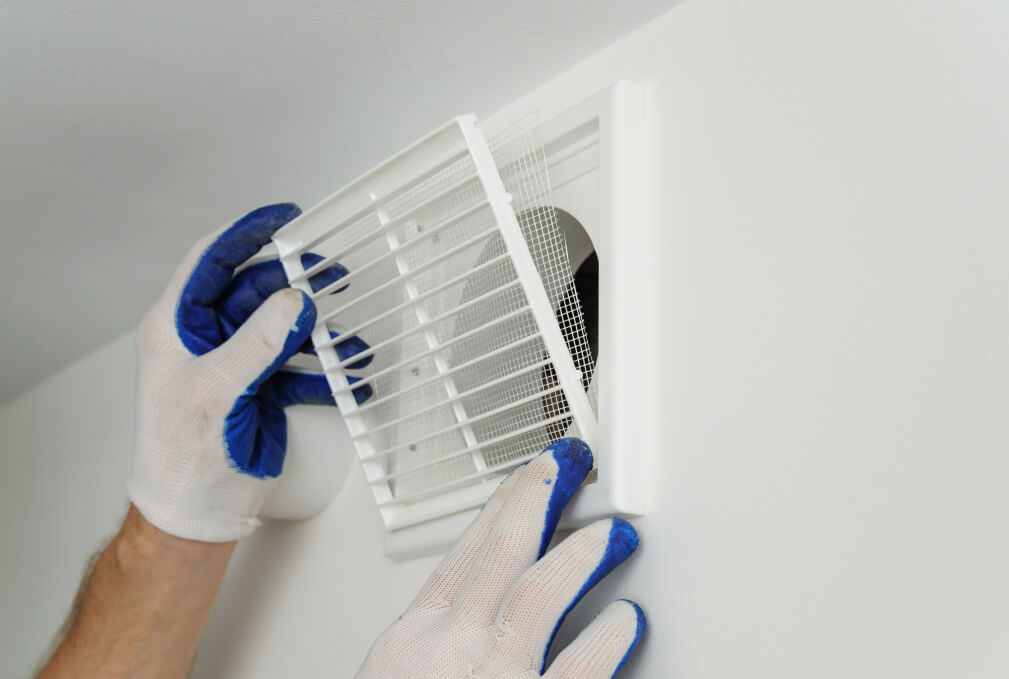
Condensation on windows inside – let’s fix it!
If you are wondering why there is condensation on the windows inside, it is most likely due to the air temperature inside your home being more humid and warmer than the air temperature outside.
This imbalance causes the cooler surface of the window to attract moisture, which then condenses into water vapor.
When warm, moisture-laden air hits a pane of glass that is much cooler, at this moment condensation forms on windows.
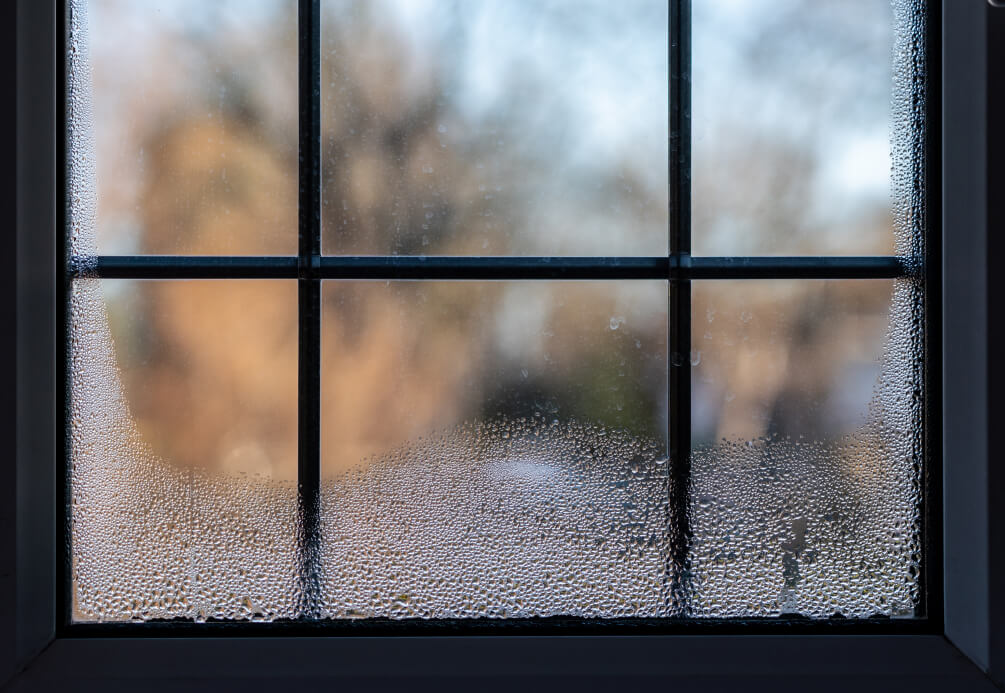
To resolve this, it’s crucial to lower the indoor humidity level or improve the insulation of your windows.
Effective solutions for condensation on windows:
- Run a dehumidifier or extractor fan in your home. Dehumidifiers work by pulling moisture out of the air and can help reduce the amount of condensation on your windows.
- Use an exhaust fan when cooking or showering to remove excess humidity from your home and prevent condensation from forming on your windows.
- Make sure you have proper ventilation in your house, especially in the places where you have a tumble dryer or washing machine working. Ventilation allows damp air to escape, preventing condensation on windows.
- Keeping your house cooler helps reduce the humidity in the air. If you lower the temperature in your home it can help reduce window condensation since warmer air holds more moisture.
- Repair any air leakage. If moisture comes into your home from a leaky roof or pipes, it will increase the humidity level in your home and cause condensation on windows.
- Reduce the number of houseplants you have. Houseplants release water vapour into the air and can increase the humidity level in your home.
By following these tips, you can lower the humidity level and risk of black mould in your home and get rid of condensation on windows.
What is condensate?
Window condensation is the water droplets which accumulate on the colder surface of the window.
It results from the difference in temperature between the exterior temperature and the indoor temperature of your house during the winter months.

During the warmer months, the temperature inside your home and outside the window is approximately the same, so condensation does not occur.
Windows glazing typically accumulates fog during colder months, from autumn to spring, as the temperature drops to the dew point.
At this point, water changes from a gaseous state to a liquid state and falls as droplets on a cold surface.
Factors such as the temperature difference and humidity of the house accelerate the dew point and condensation issue:
- Weather: Temperature and humidity in the home and outdoors.
- The intensity of air circulation in the flat.
- The quality of the glazing – cold windows.
These are the reasons why windows in the kitchen and the bathroom have more condensation inside than windows in other rooms – high humidity, excessive moisture levels and heat create perfect conditions for condensation to appear on the windows.
Remember that condensation on the surface of the double-glazed unit can also occur naturally.
For example, during cooking or using a humidifier, the humidity level rises sharply as more water vapours into the air and condensation forms.
If the condensate is forming inside the double-glazed unit, it indicates a defect in the double-glazing and glass insulation leakage.
In this case, you must replace the windows’ panes of glass.
The main causes of condensation on windows
Most often, windows have condensation on them because of faulty installation of the window sill and linings, problems with ventilation, insufficient insulation on single glazing, and low-quality double glazing itself.
Do not exclude the possibility of a defect in the factory or a breach in the installation of the window construction. Let’s study each cause in detail.
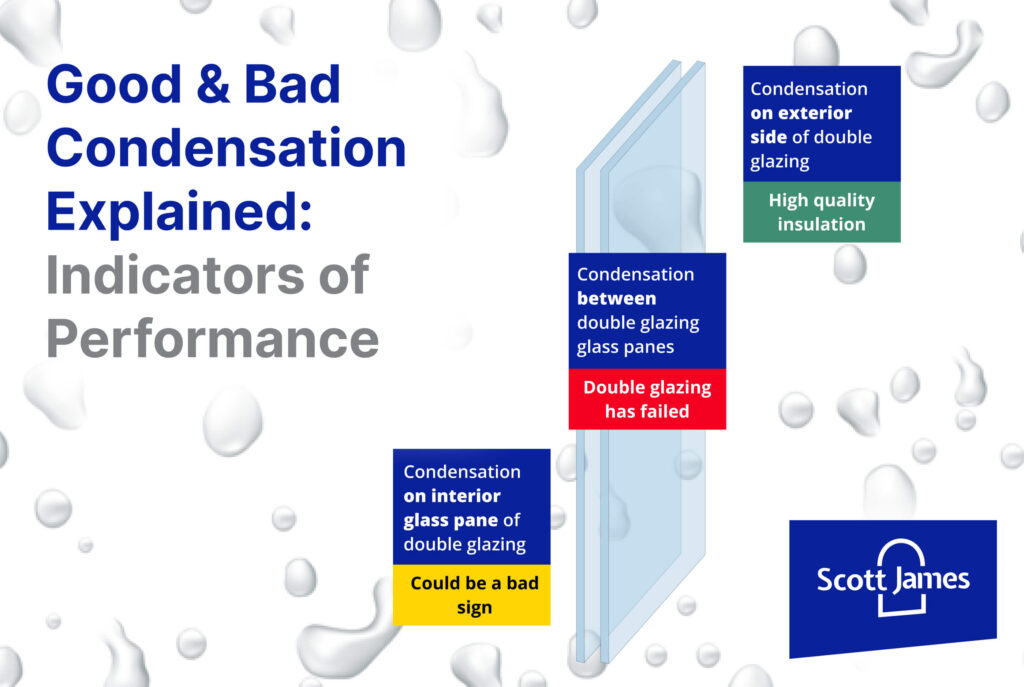
!Please Note:
If condensation is forming outside the window, it can be a sign of high-quality double glazing
More detailsThermal insulation
The problem with keeping warmth may be due to the insufficient thermal insulation properties of window double glazing.
Many owners want to save money by ordering cheap double glazing.
If condensation is due to insufficient thermal insulation properties of double-glazed units, replacing the windows with energy-efficient double-glazing is the only truly effective option.
Some period properties still have single-glazed windows, those we can retrofit with slim-profile double-glazing insulated by vacuum.
This will make a big difference to windows’ energy efficiency and will reduce condensation problems and energy bills.
Lack of ventilation
Excessive humidity in the room and a low outdoor temperature cause condensation in this case.
The new build houses usually have a modern ventilation system and properly insulated walls, so the problem of condensation is less frequent.
In older houses, however, natural ventilation occurs through gaps in the wooden windows, unlike mechanical ventilation systems.

If you replace the wooden windows with plastic ones, this circulation mechanism will be disturbed – and fogging of the insulating glass units will appear. In this case, more work will be needed to fix the problem.
First, ensure that the issue is indeed related to the ventilation system. To check this, you can hold a lighted candle to the ventilation hole: the flame should remain steady.
If the flame fluctuates or extinguishes, the system isn’t functioning correctly and requires repair. To ensure that you do not have to worry about your ventilation system malfunctions, you can fit an air window vent into your sash window.
This standard trickle vent will allow good air circulation and prevent condensation even if you have poor ventilation in your home.
Window sill
A window sill that is not positioned correctly can prevent proper air circulation. For example, a window sill that is too wide and long will prevent warm air from rising to the window, which, in sub-zero temperatures outside, will cause fogging.
There are several solutions to this problem:
- Install a smaller window sill.
- Make a perforation in a large window sill or install special ventilation grilles.
- Extend the heating radiator forward and remove its protective screen.
An abundance of window sill plants can also make it difficult to ventilate. If condensation is caused by plants, it is sufficient to micro-ventilate the window. This will also reduce the level of humidity in the room.
Occasional airing
One of the reasons why windows have condensation is the infrequent ventilation of the room.
It is advisable to ventilate the room daily for 15-20 minutes. This will reduce the likelihood of condensation on windows.
Double glazed unit insulation issue – Loss of airtightness
The insulated double-glazing sealed units may come loose during use, or there may be a manufacturing defect that affects airtightness.
Lack of airtightness is a much more serious problem than it first appears.
It causes an increase in heat loss and makes it hard to keep the property at a comfortable temperature.
Only an expert can restore airtightness. In most cases, the only thing that will help is the complete double-glazing unit replacement.
If the problem is detected immediately after installation. In most cases, the faulty window glazing units can be replaced under warranty.
Insulated linings
There are situations when installers do not insulate the lining during window installation. This can lead not only to fogging of the window but also to the occurrence of mould.
Seals and hardware
If you try to save money on window hardware, you should not be surprised by condensation: Cheap hardware does not last long and does not provide sufficient tightness of the window rather quickly.
The gasket may also be of poor quality, but more often, the problem is something else – the life of the gasket does not exceed five years; it simply wears out over time. It is sufficient to replace the old gaskets with new ones to get rid of the condensation on windows.
Faults and installation errors
As we have already mentioned above, factory defects are usually defective insulating glass units with faulty sealing. The faulty double-glazed window must be replaced under warranty.
Installation faults include the following: An installation joint around the perimeter of the window that has not been sealed with sealant. This allows cold air to enter the flat through the gap and mix with the warm air in the flat and create condensation on windows.
The window is installed unevenly. The window frame is misaligned, and the sash cannot close tightly.
Fittings have not been adjusted after installation.
Health risks of condensation
Condensation can cause more than just unsightly windows. It can result in mould growth, creating an ideal environment for bacteria, fungi, and allergens to thrive.
Prolonged exposure to mould can lead to health risks like asthma symptoms, nasal stuffiness, and eye irritation.

Moreover, condensation encourages the growth of mould spores, which can cause hypersensitivity pneumonitis and other respiratory issues.
Damp walls and ceilings can also suffer, leading to water damage and potentially affecting your home’s structural integrity.
How to prevent condensation
To get rid of the condensation on windows, it is worth regularly ventilating the room. This is beneficial not only to reduce condensation but also helps to prevent many health issues affected by mould.
You can fight the problem with tried-and-true remedies such as a soapy water solution, alcohol, and salted water. Simply wipe the window with a rag soaked in one of these solutions to protect the glass from dampness.
In addition to traditional remedies. Specially developed solutions such as aerosols, wipes, gels, and pastes are available to combat window misting.
You should apply any product to clean the interior of the window and then polish it with a cotton towel.
This method of application creates a thin protective film that will protect your windows from condensation for a long time.
The appearance of condensation may seem minor, but it can lead to more serious issues like damage to window frames, mould, and structural damage over time.
Addressing condensation early, by improving house ventilation, controlling humidity, and upgrading proper insulation, will ensure your windows remain free from condensation and your home stays healthy.
Read more articles

Types of sash windows
Types of sash windows
Georgian windows – History and Timeless Design
Georgian windows – History and Timeless Design
Safety glass regulations, UK
Safety glass regulations, UK